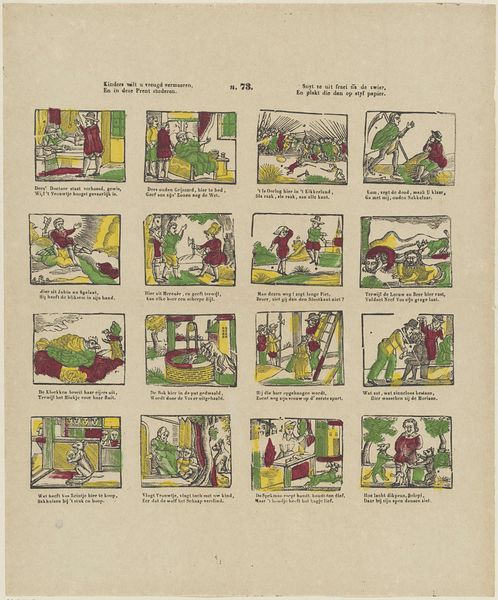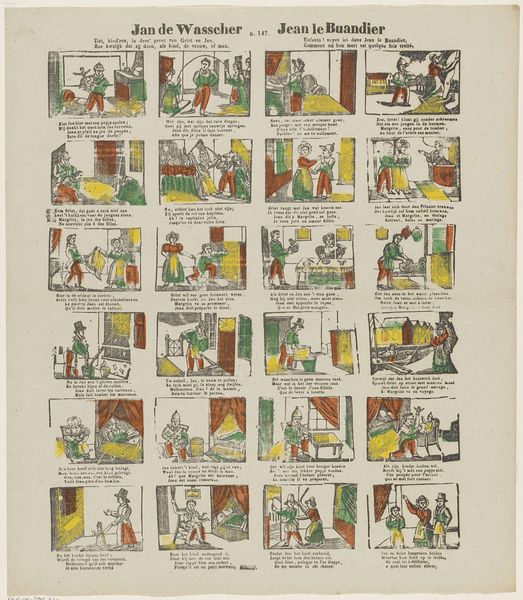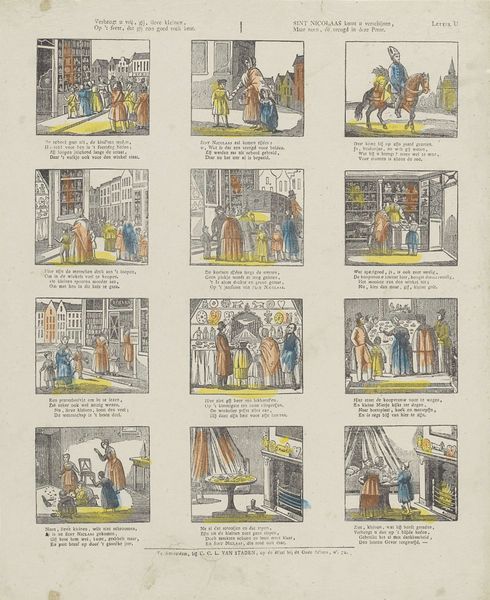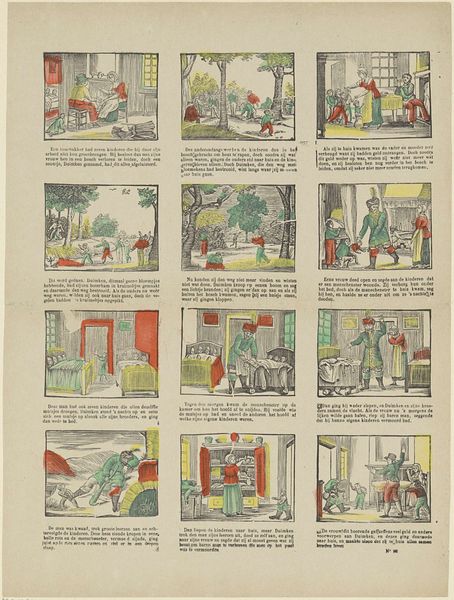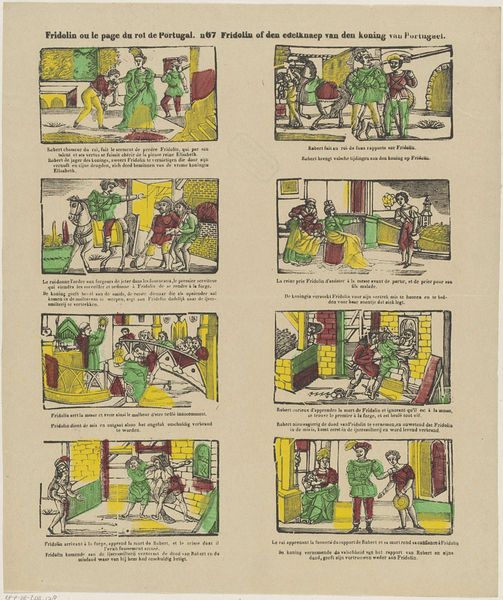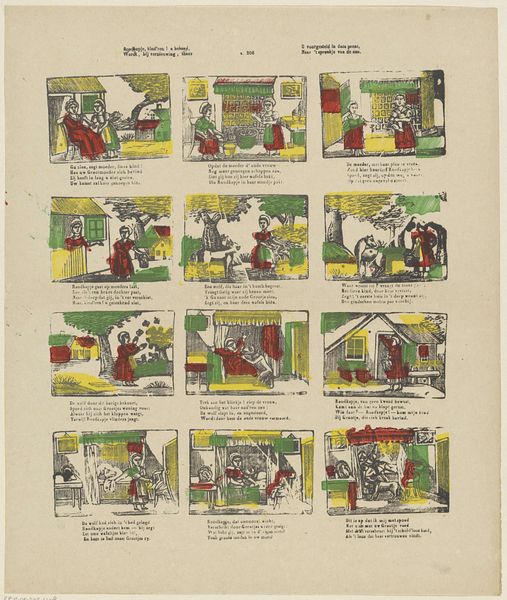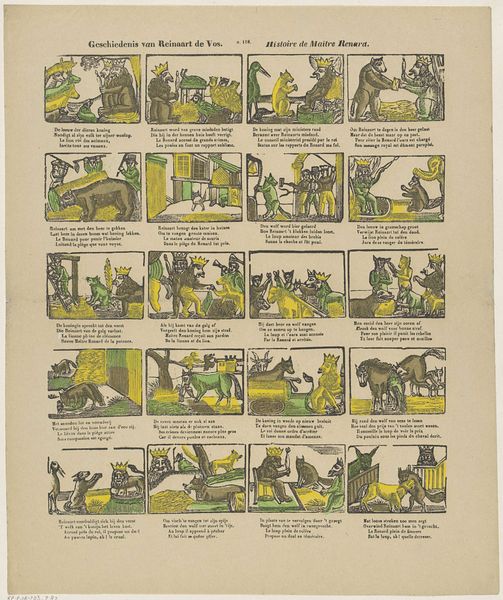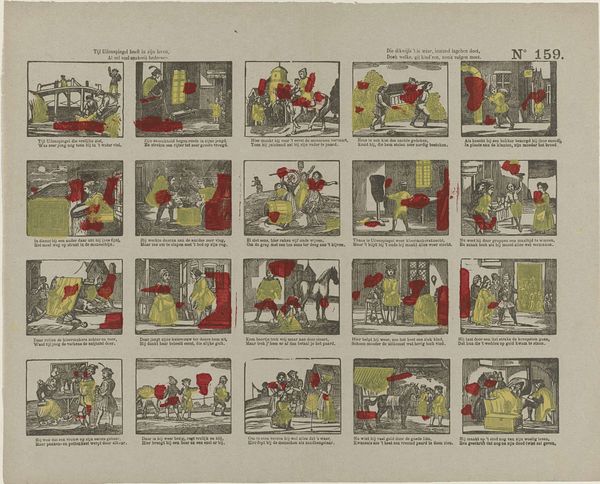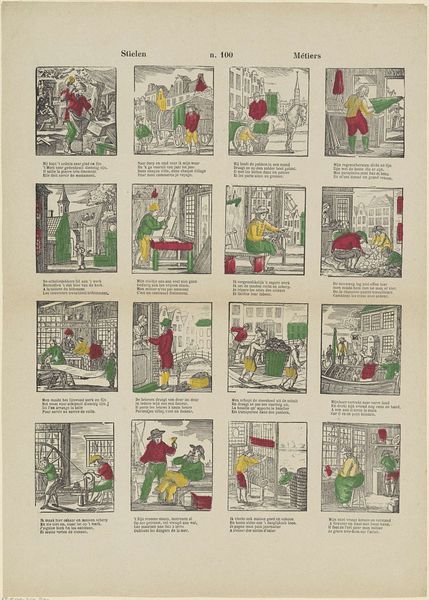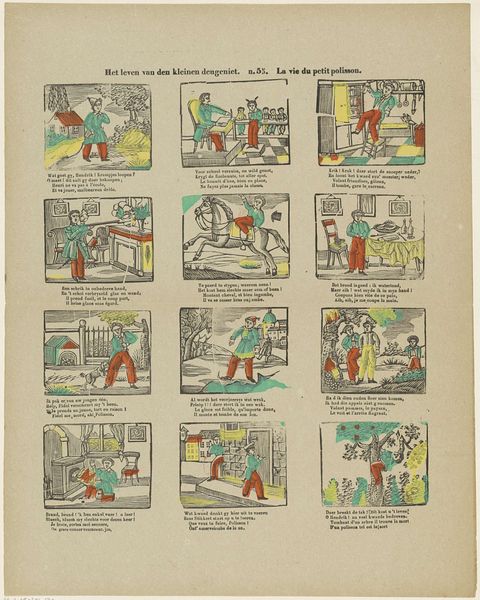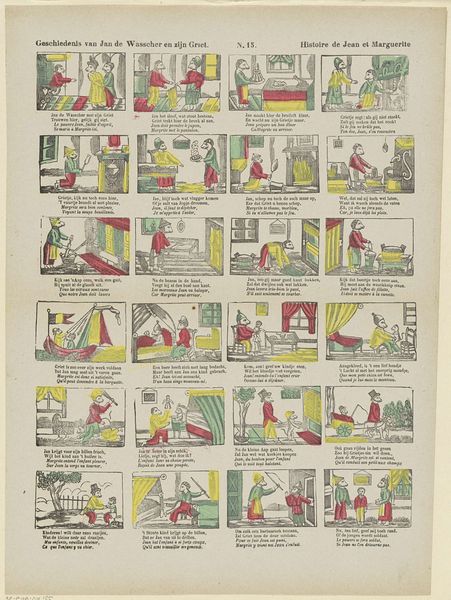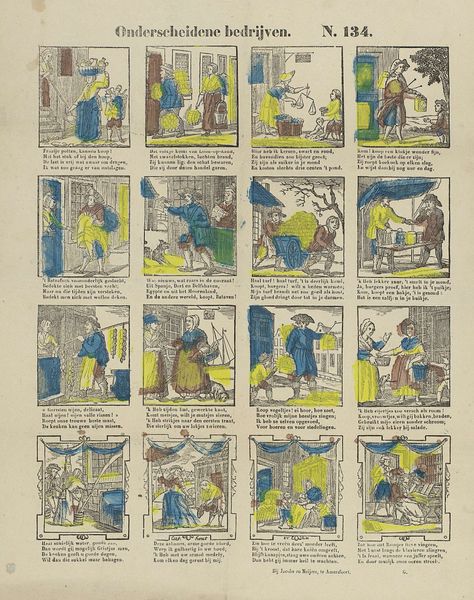
Kiest, kindren! naar uw zinsgenoegen, / Maar zoo, dat g' uw begrip en staat, / De zaak uit waar g'u in wilt voegen / In 't kiezen niet te boven gaat 1833 - 1900
0:00
0:00
print, engraving
#
aged paper
#
narrative-art
# print
#
old engraving style
#
personal sketchbook
#
genre-painting
#
engraving
Dimensions: height 391 mm, width 315 mm
Copyright: Rijks Museum: Open Domain
Curator: Here we have an intriguing print dating from between 1833 and 1900, attributed to Glenisson & Van Genechten. It’s an engraving on paper, and its Dutch title translates roughly to "Choose children! according to your pleasure." My initial reaction is that this piece gives an overview of life and occupations. Editor: Yes, this is quite fascinating. The aged paper adds a sense of historical weight. Visually, it's somewhat reminiscent of a page from a personal sketchbook, a collection of snapshots of daily life, though heavily gendered as a world made by and for men. The muted colors and aged texture suggest something precious being revealed. Curator: Exactly! This is part of a broader visual tradition portraying work and domestic life within distinct social and cultural frameworks. Notice how the scenes are compartmentalized, each with a snippet of verse beneath? Editor: I see it now, each little box representing a different occupation or social scene, reinforcing rigid societal roles. What's compelling is the implied narrative about labor. These weren’t just observations. The organization here felt highly political; they served an active social agenda by portraying traditional values, not an honest survey of Dutch society. Curator: That’s a critical perspective, and accurate. Such prints, circulated widely, did promote certain values about labor and status, subtly influencing societal expectations and perpetuating existing power dynamics. The act of choice in the rhyme references education, with subtle directives on social behavior, Editor: It feels somewhat bittersweet looking at it through a modern lens. It’s a piece of history reflecting aspirations and societal values, now complicated with the lived realities it obscured or even actively oppressed. Curator: Indeed, viewing it sparks reflection on our contemporary approach to work, family and the continued negotiation of socio-economic boundaries. Editor: Definitely gives pause about the stories we choose to tell ourselves through art and image-making.
Comments
No comments
Be the first to comment and join the conversation on the ultimate creative platform.

